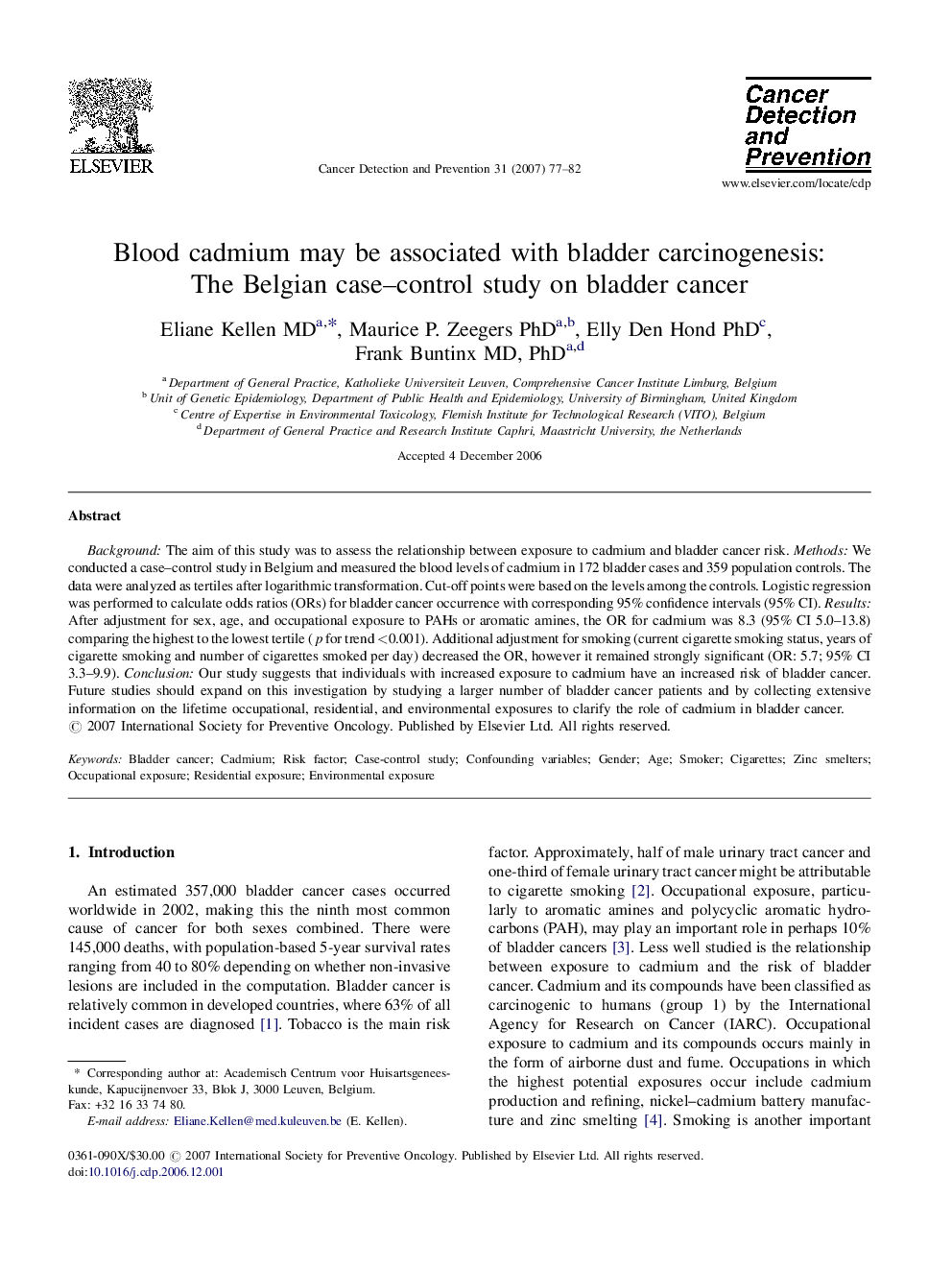| Article ID | Journal | Published Year | Pages | File Type |
|---|---|---|---|---|
| 2108627 | Cancer Detection and Prevention | 2007 | 6 Pages |
Background: The aim of this study was to assess the relationship between exposure to cadmium and bladder cancer risk. Methods: We conducted a case–control study in Belgium and measured the blood levels of cadmium in 172 bladder cases and 359 population controls. The data were analyzed as tertiles after logarithmic transformation. Cut-off points were based on the levels among the controls. Logistic regression was performed to calculate odds ratios (ORs) for bladder cancer occurrence with corresponding 95% confidence intervals (95% CI). Results: After adjustment for sex, age, and occupational exposure to PAHs or aromatic amines, the OR for cadmium was 8.3 (95% CI 5.0–13.8) comparing the highest to the lowest tertile (p for trend <0.001). Additional adjustment for smoking (current cigarette smoking status, years of cigarette smoking and number of cigarettes smoked per day) decreased the OR, however it remained strongly significant (OR: 5.7; 95% CI 3.3–9.9). Conclusion: Our study suggests that individuals with increased exposure to cadmium have an increased risk of bladder cancer. Future studies should expand on this investigation by studying a larger number of bladder cancer patients and by collecting extensive information on the lifetime occupational, residential, and environmental exposures to clarify the role of cadmium in bladder cancer.
